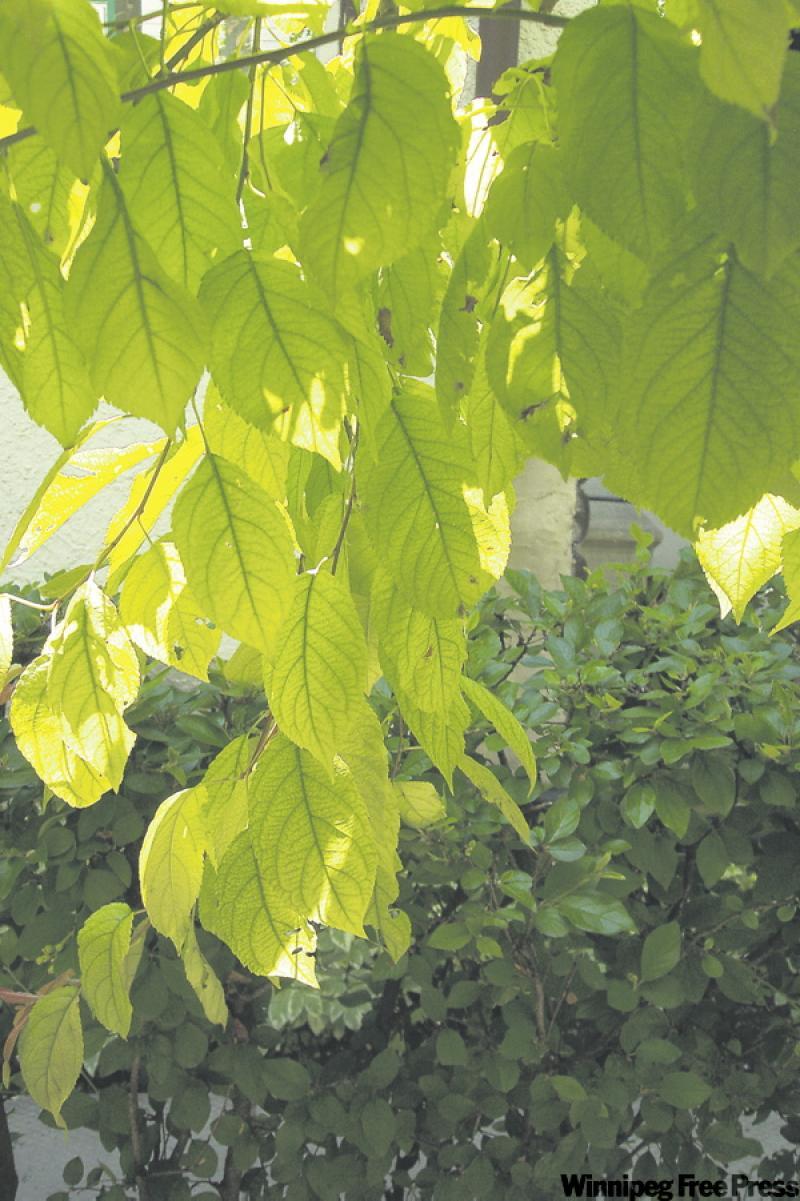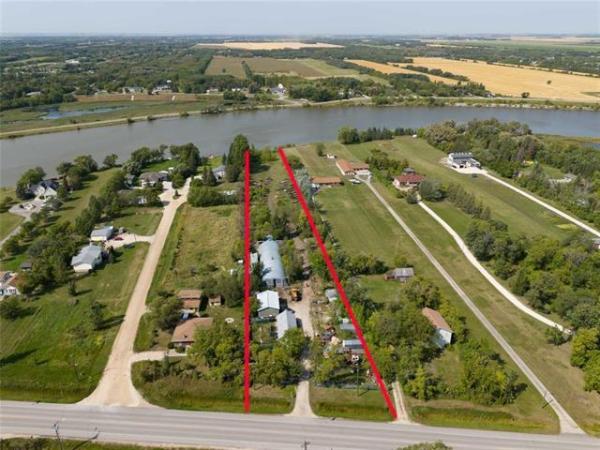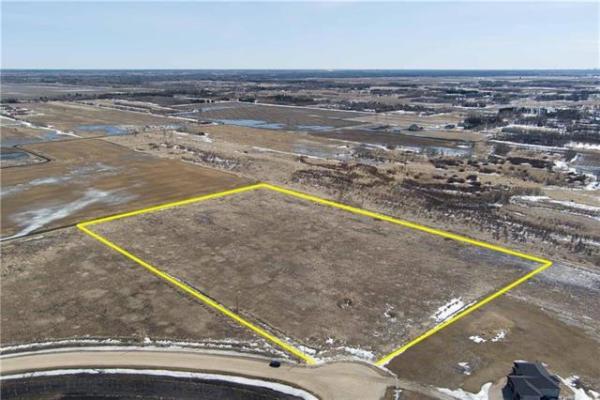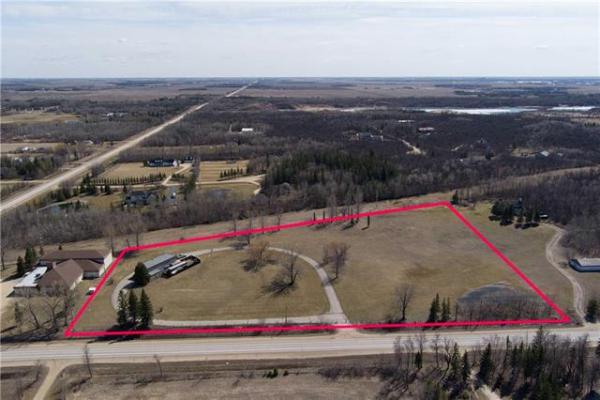
The large amount of rain we've had in southern Manitoba this spring and early summer has certainly been a blessing for many plants. But there's a downside to excessive rain, especially when it comes over a short period of time.
In infertile soils that are certainly typical of most urban areas, frequent rain causes leaching of highly soluble plant nutrients such as nitrates and phosphates. Also, prolonged waterlogged soils are also deficient in available nutrients.
Here's what happens. The first set of leaves produced during the early part of spring develop a good green colour. But, as the spring turns into early summer, the new leaves become yellowish-green in colour. The yellowing of leaves as a result of soil-nutrient deficiencies is called chlorosis, and it is a serious disease. Some trees and woody shrubs are more susceptible to this colour change than other plants. Many kinds of trees and shrubs are affected, but it's been especially damaging this year to the apple group of fruiting trees.
Weakened leaves turn yellow in many fruit trees as a result of soil iron deficiency. When this happens, the trees are susceptible to fungal and bacterial diseases. This spring, the apple group of trees has been hit with fire blight disease.
Here is a common scenario that I have observed. Last year, many trees had yellowed leaves on one side of their crowns. This year those yellowed leaves are turning brown and wrinkled, often drooping from the twig. Some of the leaves will have many dark leaf spots and blotches. These affected leaves fall from the tree prematurely. Early in the season the leaves may be a cinnamon brown or tan colour. These are the first signs of fire blight infection.
Cool, very wet springs and early summers in southern Manitoba invariably result in fire blight-infected trees, especially in apple and ornamental crabapple trees. Fire blight can seriously disfigure the tree's crown and ultimately kill it. The disease spreads slowly in some trees and very rapidly in others, since each tree has its own internal resistance mechanism for the containment of diseases.
The solution consist of a treatment program that must be rigorously followed:
(1) Collect all fallen leaves and fruit and put them in trash bags for disposal;
(2) Fertilize the tree this fall with a balanced tree fertilizer with added iron chelate. For larger trees this best done by a licensed spraying/fertilizer applicator. If you are doing this yourself, place one-inch diameter holes about six inches deep (clay loam soils only) in concentric rings under the tree's crown, spacing the holes 15 inches apart. Start three feet from the trunk and go out to the drip line. The series of concentric rings can be spaced at 15 inches apart. Add two tablespoons of fertilizer and 1/2 teaspoon of iron chelate to each hole. Cover with soil or compost and water. Iron chelate is used to supplement the deficient iron in the soil.
(3) Spring fertilizing should also be done in 2010. Your tree may need additional fertilizing in the fall of 2010 and in the spring of 2011.
(4) Prune off diseased twigs and branches now, but you must disinfect the pruning tool after every cut or the disease will be spread to other areas of the tree. Use bleach and water, methyl hydrate or denatured alcohol for disinfecting tools. Place pruned material in the trash.
(5) Ideally, the infected tree should be sprayed with a dormant lime sulfur fungicide in April of 2010, and then sprayed twice with copper fungicide about two weeks apart in June, 2010.
(6) Repeat 2009 treatments in 2010 and 2011, following the same monthly schedule.
If you plan to go on holidays during one of the important treatment times, be sure you delegate a trusted person to do the necessary treatments. Ideally, you will want to see the leaves return to green over the treatment period.
Michael Allen M.Sc.F., RPF is a consulting urban forester and certified arborist. He owns Viburnum Tree Experts, a Manitoba company that provides objective assessments of the condition and the care required for trees and shrubs on home and business landscapes. He can be reached at 204-831-6503 or viburnumtrees@shaw.ca His web site is www.treeexperts.mb.ca



